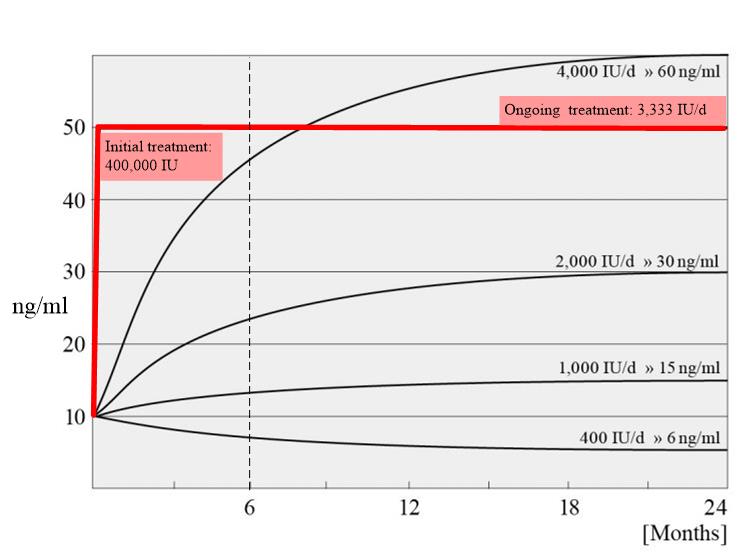Low maternal vitamin D level at 4 months associated with 3X more lung problems in boys
Vitamin D deficiency at 16 to 20 weeks' gestation is associated with impaired lung function and asthma at 6 years of age.
Ann Am Thorac Soc. 2014 May;11(4):571-7. doi: 10.1513/AnnalsATS.201312-423OC.
Zosky GR1, Hart PH, Whitehouse AJ, Kusel MM, Ang W, Foong RE, Chen L, Holt PG, Sly PD, Hall GL.
School of Medicine, University of Tasmania, Tasmania, Australia.
 Click on chart for details
Click on chart for details
RATIONALE:
Vitamin D deficiency is associated with chronic lung disease. We have previously shown in an in vivo mouse model that maternal vitamin D deficiency is associated with alterations in early life lung structure and function. However, there are limited data to support a relationship between maternal vitamin D deficiency during the early stages of lung development and postnatal lung function in human populations.
OBJECTIVES:
To assess the association between maternal vitamin D deficiency, postnatal lung function, and asthmatic status in a longitudinal birth cohort.
METHODS:
Serum was collected at 16 to 20 weeks' gestation at the time of recruitment in a community-based prospective birth cohort for measurement of vitamin D (25[OH]D). Lung function was assessed by spirometry according to American Thoracic Society guidelines in children at 6 and 14 years of age. Demographic and clinical history data were collected by questionnaire at recruitment and at the follow-up visits.
MEASUREMENTS AND MAIN RESULTS:
FVC Z-scores in both sexes (β, 0.007 [95% confidence interval (CI), 0.001-0.013]; P = 0.02) and FEV1 Z-scores in girls (β, 0.007 [95% CI, 0.001-0.013]; P = 0.02) were positively associated with maternal serum 25(OH)D at 6 years of age. These associations were mostly absent at 14 years of age. Maternal vitamin D deficiency was positively associated with asthma at 6 years of age but only in boys (odds ratio, 3.03 [95% CI, 1.02-9.02]; P = 0.04).
CONCLUSIONS:
This study supports the notion that vitamin D deficiency during lung development may impact on postnatal lung growth and increase the risk of developing lung disease.
